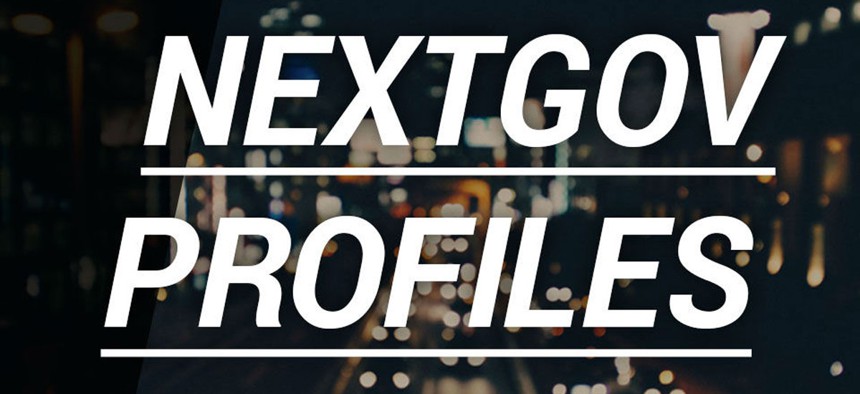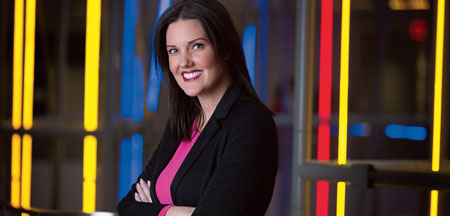An Innovator in the Line of Fire -- Literally

She was shot in Central America and targeted by Islamic extremists in Afghanistan. But Alexis Bonnell’s toughest challenge so far? Navigating the federal government.
She was shot in Central America and targeted by Islamic extremists in Afghanistan. But Alexis Bonnell’s toughest challenge so far? Working in Washington and navigating the bureaucracy that is the federal government, while also tackling innovation.
An innovation evangelist at the U.S. Agency for International Development, Bonnell has grand ideas for how technology can be used to solve global challenges and her message is as compelling as any to cross a TED Talk stage. But this Orange County, California, native has had a good reason to shun the spotlight: She was once in the crosshairs of the arguably most infamous Islamic fundamentalist group.
“For a while, I worked on the Middle East peace process activities in Jerusalem, and while working in Afghanistan, at one point, I was on the Taliban’s most wanted list, so I’ve kept a lower profile,” says the former development and humanitarian executive, who now heads the engagement office in USAID’s U.S. Global Development Lab. The lab focuses on using science, technology, innovation and partnership to accelerate development impact around the world.

Bonnell’s path toward a global development career was circuitous. Growing up, she jetsetted between Southern California and her mother’s family’s farm in Iowa. Her paternal bloodline was all glitz and glamor: Her father worked in the Nixon administration and her grandmother was the 1950s movie and TV star, Gale Storm.
Her dreams for her own future were equally as dazzling. As a child, she dreamed of becoming the president. Then, because of her family ties, she assumed she’d go into entertainment, as an actor or director.
While pursuing her first master’s degree at New York University, Bonnell became the marketing director for the Internet Trade Association. She essentially acted as a translator between Wall Street and the tech industry to help members understand how this newfangled technology, the Internet, would affect business and society.
“It was that really interesting dawning of age when it wasn’t about how many stripes you had on your shoulder or how many gray hairs or how long you had served; it was about results and what you could do,” Bonnell says. “I didn’t feel the need to be an expert; there was value in being able to translate.”
During her Wall Street experience, Bonnell was headhunted to join the United Nations to coordinate development projects. On her first deployment in Afghanistan, the Islamic terrorist group zoned in on her.
Word on the street, she says, was the Taliban didn’t like the tall blond American Christian woman often seen at the construction site of Kabul University’s women’s dormitory, a USAID project Bonnell worked on. (She’s now a brunette.)
“Maybe it was stupidity, but I wasn’t smart enough to be scared,” Bonnell says. Instead, she says, she made it a point to walk around the construction site as often as possible.
“I figured if I ran away and hid, I couldn’t expect any other Afghan woman to step foot there,” she says. “That project was one of the ones I was most proud of" being involved in.
That incident in Afghanistan actually wasn’t the first time Bonnell found herself in the line of fire -- literally.
In 2002, Bonnell was working with a nongovernmental organization in Central America. As she and her colleagues were driving back from Antigua to Guatemala City they ran into what Bonnell dubbed “the classic road-closed-detour robbery thing.” The robbers weren’t happy because the NGO didn’t have anything valuable, so they shifted their attention to the passengers.
“At the time, I had long white-blond hair so it was like, ‘let’s take the gringa,’” Bonnell recalls.
A quick-witted colleague attempted to hide Bonnell from the attackers. To intimidate the NGO staffers, the robbers started firing off their guns and one of the bullets hit the van and ricocheted into Bonnell.
“That was the best thing that could happen because no one wants a bloody gringa,” she says. “It was like, ‘we don’t want her anymore.’ I was very lucky to have the bullet plucked out and sewn up in the next village.”
Coming to Washington
The nation’s capital may be far from a war zone, but going from building schools in Afghanistan to being a Beltway civil servant was no cakewalk.
“In some ways, coming to government is the biggest challenge of all because I came from a series of roles where it was about being decisive and making decisions based on very clear data or project management,” she says. “Government, and USAID especially, is much more convening and collaborative.”
Among the projects she’s taken part in: crowdsourcing initiatives like USAID’s Grand Challenges for preventing the spread of Ebola and increasing early childhood literacy rates.
“Part of evangelizing innovation is helping people be inspired to invent, but also making sure the way they innovate provides real evidence of value,” she says.
Another Grand Challenge, “Saving Lives at Birth," called on the brightest minds worldwide to identify and scale up transformative prevention and treatment approaches for pregnant woman.
Jorge Odon, an Argentine car mechanic without any medical background, came up with an idea for a device to help facilitate the birth process, with the goal to reduce maternal and infant mortality within the first 48 hours of birth.
“What I like about the Odon device is not that it’s an amazing technological invention; it’s an example of an idea we would never had access to doing business in our current way,” Bonnell says. “It’s an example of a mind we would never have unlocked.”
Initiatives like the Grand Challenges for Development break outside of traditional ways of doing business.
“One school of thought says valid innovation is validated by long-term technical experts or people who have been doing it a really long time,” Bonnell says. “And yet, you’re seeing an incredible wisdom of the crowd and an incredible ability to collaborate on the right solution.”
Bonnell’s own crowd is a 12-person team where she pushes autonomy, empowerment and passion around big ideas and great execution.
“That’s a really hard thing in government because government often rewards you, from a leadership perspective, with administration and bureaucracy,” she says.
As a leader, giving away the win is a pivotal key to success anywhere, but especially in government, Bonnell says. Holding onto a project too tightly means “it won’t be iterated or have the variety of thinkers it should have,” she explains.
“And it won’t be adopted and people won’t feel ownership or have their own sense of pride around it,” Bonnell adds. “You need a passionate owner, but at some point, that person needs to pass on that passion otherwise the project only gets as big as that person’s passion.”
Navigating the red tape in a sometimes slow-moving entity like the federal government hasn’t always been easy, Bonnell acknowledges. But it hasn’t put a damper on her desire to make a lasting impact.
There are two ways to “die” in government, she says.
“You kind of wither away in the bureaucracy or you get shot in the head by poking your head out over the normal way of business,” Bonnell says. “Whenever I leave government, it will probably be from being shot in the head.”
And considering her brush with death in the past, Bonnell isn’t the type who’s likely to avoid the crossfire -- figuratively or literally.
A shorter version of this profile appeared in the January/February issue of GovExec magazine.



